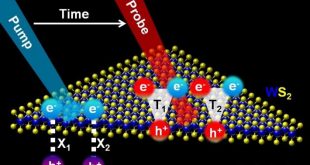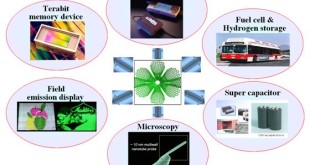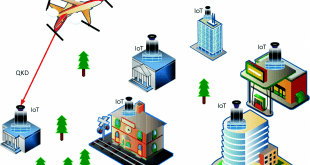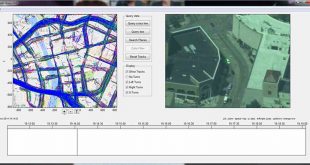Blockchain is based on open, global infrastructure, decentralized public ledger of transactions that no one person or company owns or controls, ensures security of transfer of funds through public and private cryptology and third parties to verify that they shook, digitally, on an agreement. A blockchain is, in the simplest …
Read More »Muography employs cosmic ray particles Muons, to detect shielded nuclear contraband, to objects deeply buried up to thousands of meters below the earth’s surface
Muons are subatomic particles that behave a lot like electrons but are around 200 times heavier. As the US Department of Energy explains, “Muons created in the atmosphere constantly hit every inch of the Earth’s surface and pass through almost any substance.” Many scientists have noted that measuring the …
Read More »Reliable Sense and Avoid (SAA) systems enable large scale civil, and military drones and swarms
Unmanned Aerial Vehicles (UAVs) are growing at frentic pace driven by civil, consumer and military requirements. According to Volpe report, the number of UASs operating in the U.S. National Airspace System (NAS) will exceed 250,000 by the year 2035. There are growing number of civil and commercial applications of UAVs, …
Read More »Devices based on Near-Field Thermal Radiation for high efficiency solar panels, thermal management of laptops and smartphones
Heat (i.e., thermal energy) is defined as the energy that is transferred spontaneously between two bodies due to difference in their temperature; heat flows from high to low temperature. There are three main well-known mechanisms for heat transfer: conduction through solid and fluids, convection through fluid, and radiation through solid, …
Read More »“Trion” instead of electron will play a key role in Future electronics and Quantum information transmission
Trions are what scientists call “quasiparticles,” bundles of energy, electric charge and spin that zoom around inside semiconductors. Trions were first observed in quantum wells in 1993 and shortly thereafter in GaAs-AlGaAs quantum wells. Trions were were predicted and found in the photoluminescence and absorption spectra of various optically …
Read More »Carbon nanotubes revolutionising Military with miniature sensors, ultrawideband communications, micro robots and efficient power sources
Nanotechnology enables designing and creating structures and devices utilising extraordinary properties and behaviour of matter at very fine length scales – nanoscale level (10-9 m). Between 2001 and 2004, approximately 60 countries globally implemented national nanotechnology programmes. According to R.D Shelton, an international technology assessor, research and development in this …
Read More »Polarization-based imaging systems or cameras enhance machine vision, autonomous vehicle navigation, facial recognition, and military target detection
Humans view the intensity of light as the various colors of the spectrum. Characteristics of light include amplitude (intensity), frequency (color), polarization, and coherence. The human eye has cone cells, that correspond reflected light from objects into colors which range from wavelengths of approximately 400-700nm. Polarization, the direction in which …
Read More »Quantum Cryptography emerging alternative to secure Military Internet of things (MIOT) from cyber attacks even in post Quantum Computer Era
The Internet of things (IoT) is the network of physical devices, vehicles, home appliances and other items embedded with electronics, software, sensors, actuators, and connectivity which enables these objects to connect and exchange data. Each thing is uniquely identifiable through its embedded computing system but is able to inter-operate within the …
Read More »Defence and Security require advanced authentication techniques including high speed, and accurate biometric identification
As attack vectors increase with the burgeoning of the Internet of Things (IoT), the Defense sector is exposed to different risks that require increasingly advanced authentication techniques. Today’s threat players are using more sophisticated social engineering tactics, credential-stuffing botnets, and account takeover tactics to pull off all sorts of attacks. …
Read More »Wide-area Airborne Motion Imagery (WAMI ) offers Military persistent, real-time surveillance for enhanced situation awarness through an intelligent, airborne sensor system
The DoD has become increasingly reliant on intelligence, surveillance and reconnaissance (ISR) applications. With the advent of expanded ISR capabilities, there is a pressing need to dramatically expand the real-time processing of wide-area, high-resolution video imagery, especially for target recognition and tracking a large number of objects. Not only is …
Read More » International Defense Security & Technology Your trusted Source for News, Research and Analysis
International Defense Security & Technology Your trusted Source for News, Research and Analysis










